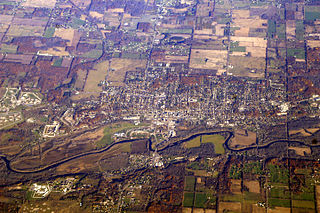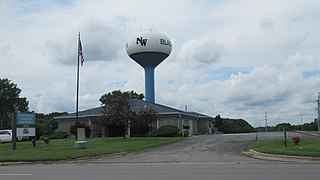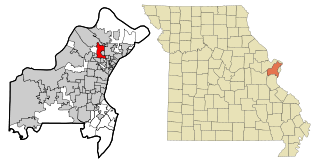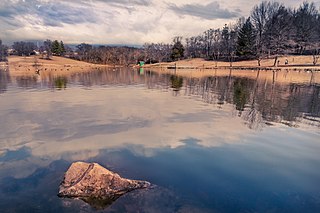
Town of Pines is a town in Pine Township, Porter County, in the U.S. state of Indiana. The population was 594 as of the 2020 census.

Standish Township is a civil township of Arenac County in the U.S. state of Michigan. The population was 1,701 at the 2020 census. The city of Standish borders the township on the northwest but is administered autonomously.

Union Township is a civil township of Branch County in the U.S. state of Michigan. The population was 2,942 at the 2020 census.
Athens Township is a civil township of southwest Calhoun County in the U.S. state of Michigan, about 15 miles (24 km) south of Battle Creek. It is part of the Battle Creek, Michigan Metropolitan Statistical Area. As of the 2020 census, the township population was 2,444. The Nottawaseppi Huron Band of Potawatomi is based in Athens Township.

Kingsford is a city in Dickinson County, Michigan, United States. Its population was 5,139 at the 2020 census, a slight increase from the 5,133 recorded at the 2010 census. It was named for the developer Edward G. Kingsford.

Norway is a city in Dickinson County in the U.S. state of Michigan. The population was 2,840 at the 2020 census. It is part of the Iron Mountain, MI–WI micropolitan statistical area.

Alma is the largest city in Gratiot County in the U.S. state of Michigan. The population was 9,488 at the 2020 census. It was incorporated as the Village of Alma in 1872 and became a city in 1905.

Ionia is the largest city in, and the county seat of, Ionia County, Michigan, United States. The population was 13,378 at the 2020 census. Every July it hosts what is said to be the world's largest free-admission fair, the Ionia Free Fair. The city is mostly within Ionia Township, with small portion extending into Easton Township and Berlin Township, but is politically autonomous of the townships. The city is named after Ionia, a historic region in Greece.

Blackman Charter Township is a charter township of Jackson County in the U.S. state of Michigan. As of the 2020 census, the township population was 25,642.

Rockford is a city in Kent County in the U.S. state of Michigan. The population was 6,177 at the 2020 census.

Lenox Township is a civil township of Macomb County in the U.S. state of Michigan. As of the 2020 census, the population was 12,119, up from 10,470 in 2010.
Bloomer Township is a civil township of Montcalm County in the U.S. state of Michigan. As of the 2020 census, the township population was 6,352, up from 3,904 in 2010.
Pine Township is a civil township of Montcalm County in the U.S. state of Michigan. The population was 1,870 according to the 2020 census.

Mattawan is a village in Antwerp Township, Van Buren County of the U.S. state of Michigan. The population was 1,997 at the 2010 census.

Rock Creek is a city in Pine County, Minnesota, United States. The population was 1,628 at the 2010 census. Portions of the Mille Lacs Indian Reservation are located within Rock Creek.

Berkeley is an inner-ring suburb of St. Louis, located in St. Louis County, Missouri, United States. The population was 8,228 at the 2020 census. Portions of St. Louis Lambert International Airport are within the city limits.

Crystal Lake Park is a Missouri Class 4 city in St. Louis County, Missouri, United States. The population was 508 at the 2020 census.

Oakville is an unincorporated community and census-designated place (CDP) in south St. Louis County, Missouri, United States. The population was 36,301 at the 2020 census. Oakville is 18 miles south of the city of St. Louis and borders the Mississippi and Meramec rivers; the area is part of "South County".

Pine Lawn is a city in St. Louis County, Missouri, United States. The population was 3,275 at the 2010 census.
Richland Township is a civil township of Montcalm County in the U.S. state of Michigan. The population was 2,646 at the 2020 census, down from 2,778 in 2010.





















